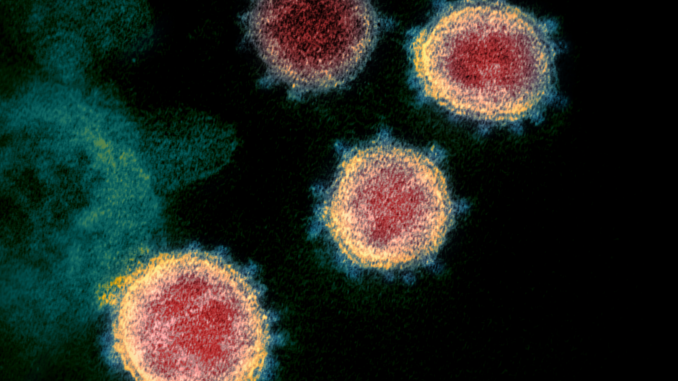
Nine days ago, TheoSentrik posted his last covid-19 update for us, in the “National Puppy Day” thread. On 5/31, per the Johns Hopkins numbers, there were 103,853 Americans dead from the virus. As of 10:30 on 6/8 the number was 110,990.
(As an aside, TheoSentrik… should you happen to be reading this, I hope you’re taking a well-deserved vacation and decide to wade back into commentary at some time in the future.)
The numbers are a welcome relief from those we had been experiencing. This marks an eight day span where we averaged fewer than a thousand deaths per day. It is part of a continued slide which would seem to demonstrate that concerns about the “opening” of the country were grossly overstated, and arguably even a perfect example of fearmongering.
Any serious analysis of the numbers undercuts that interpretation of the data. Since May 29, New York has only had one day – June 4 – with more than 100 deaths due to the coronavirus. New Jersey, another state hit hard by the outbreak, has had only four days at 100 or more dead. These shifts help explain the lowered numbers: with the active caseload diminishing in those states, greater attention is available for individuals who have the disease. With careful monitoring and treatment, many of those who develop even severe symptoms tend to survive.
The death rates have two distinct levels. Even with proper care, the disease is far deadlier than influenza; but when proper care is not available because a local health system is overburdened, the odds of fatality increase dramatically.
This means that an increased death rate lags an increased active caseload. Deaths can be minimized for as long as health systems aren’t overburdened. Concerns should be raised not only when the fatalities are climbing rapidly but when the number of new cases is rising… because that is how health systems become overburdened.
In Texas, Florida, California and more than a dozen other states, the caseload has been rising since Memorial Day weekend. It is expected to rise again in the wake of the protest marches.
The hoped-for reduction in cases with the advent of the summer months is not happening. The states which are currently seeing the greatest caseload increases are those which are already experiencing plenty of direct ultraviolet sunlight and high temperatures.
While some measure of contact tracing has been enacted by states, widespread testing has not, save in some areas which have already been very heavily affected by the disease.
All of this suggests that we are currently close to a bottoming-out of the fatality numbers which we can reasonably expect, and that we are at risk of those numbers increasing again, this time from a series of smaller hot spots throughout the country.
With 21 weeks until the November election, an average of about 5,000 deaths per week and the current numbers at the low end of what we can expect to see, it is very likely we will see a death toll of more than 200,000 by November.
We may be given a chance to prevent that through medical science. Unfortunately, it looks as if human nature will prevent us from saving ourselves.
Research into the disease has continued on all fronts. While there is no chance for a successful wide release of a vaccine by November, hope remains for a medicinal cure. This hope is irrational. While new medicines are being developed for potential treatment of the disease, only medicines already in use are available for mass production and wide dispersal. So far, there have been no tests which suggest that any combination of existing medicines act as the type of “wonder cure” which would be necessary to drastically shrink the fatality rate among those Americans who have the disease.
The most promising tests have suggested, for some drugs, a reduction in symptom severity when administered early after infection. If any drug can be found which consistently attains those results it will be very helpful at restricting new outbreaks in countries which have effective containment measures in place.
In America, we do not have effective containment measures in place, nor are we likely to have them at any point within the next few months. Having spent time in lockdown, a significant percentage of the population has little willingness to return to those conditions. We knew what steps were needed for containment but for political reasons our government refused to take them. Now, many would balk at being told to return to quarantine because little benefit was seen from the initial attempt. The mixture of widespread testing, contact tracing and restricted movement which allowed many other countries to beat back coronavirus has been effectively taken off the table because of the President’s gross incompetence.
It might be possible to turn public opinion around with a concerted effort from both major political parties. Unfortunately, the GOP fears losing power in November and is unwilling to hand any policy victory to the Democrats. The power of their offices is more important than public health.
Beyond vaccines and medicines, however, we have research… and research is invaluable at this point. New information continues to be disseminated by the World Health Organization as more is learned about the virus. Only yesterday, information was released that asymptomatic transmission is rare… but also that many cases which would appear on the surface to be asymptomatic are in fact lightly symptomatic cases.
(The disparity is explained by medical guidelines. For example, while a person may have an elevated temperature due to an infection, unless they are above 100.4 degrees they’re not generally considered to have a fever.)
This is helpful, because it allows countries or individuals to address the issue of transmission based on an ever-more-specific and accurate cluster of facts. In this instance, it suggests a guideline for public venues which wish to diminish the chances of transmission: temperature checks at entryways with a denial of service to those even showing a mildly elevated temperature, and denial of entry to people with intermittent cough or nasal drip.
This is where our secondary stage of failure comes into play. Beyond the inability to effectively contain the disease, far too many have now become convinced that covid-19 is a danger only to the elderly, or that it is no different than a common flu. People have reacted aggressively, sometimes violently, to suggestions that they take basic precautions which would help to keep others safe. The notion that such people would willingly accept being refused entry to a store or event purely because they had mild symptoms is unbelievable.
Those who now claim to have “respiratory issues” that prevent them from wearing a mask they find uncomfortable – despite never having any significant breathing issue in the past – would be inclined to tell themselves that any small sniffles were merely allergies, that any elevated temperature was merely the normal deviation seen from person to person.
I anticipate 200,000 Americans dead of covid-19 before November. It doesn’t have to happen. But it will.
